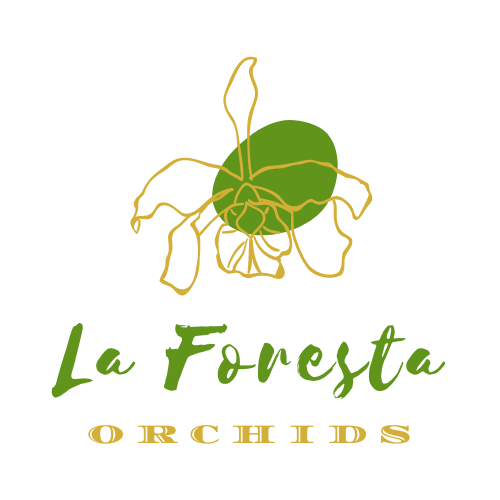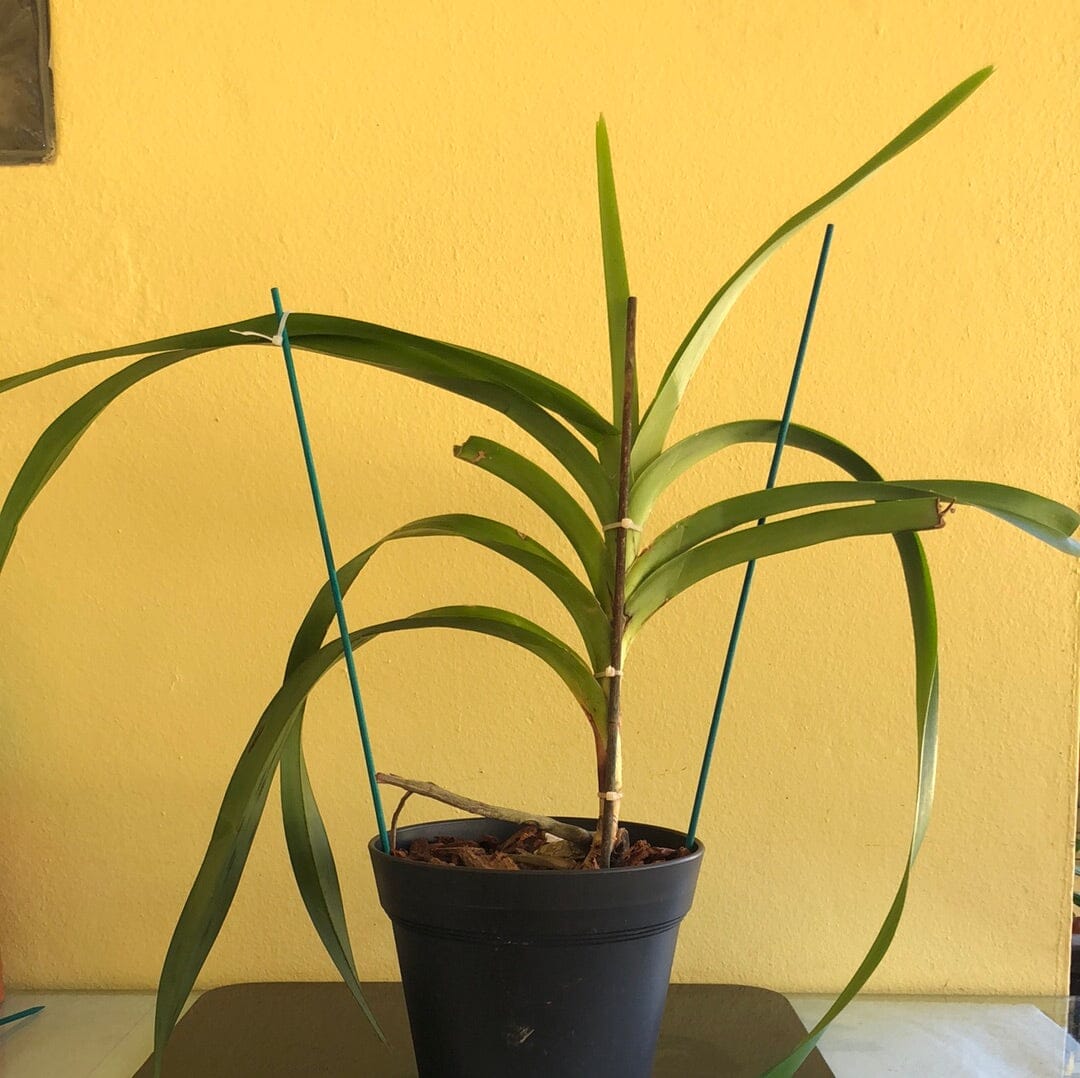La Foresta Orchids
Vanda tricolor var. suavis
Vanda tricolor var. suavis
Couldn't load pickup availability
Introducing the Vanda tricolor var. suavis Orchid: A Rare Beauty from Southeast Asia
Discover the enchanting world of the Vanda tricolor var. suavis, a unique orchid species hailing from the lush landscapes of Laos and the Indonesian islands of Java, Bali, Lombok, and Sumbawa. This captivating botanical gem made its way to England back in 1846, thanks to the intrepid collector Thomas Lobb, who scoured the western part of Java for this exquisite species.
Vanda tricolor var. suavis is a rarity in the world of orchids, and it's not hard to see why. When it blooms, its 3-inch-wide flowers release a fragrance that evokes the delightful aroma of grape candy. Each inflorescence boasts a generous bounty of 15 or more of these mesmerizing blossoms. What's even more astonishing is that this particular crop is over a decade old, making it one of our most robust and substantial specimens.
Cultivating the Vanda tricolor var. suavis requires a careful touch and a few essential tips. This species thrives in bright light levels, basking in nearly full sun during winter and enjoying lightly dappled sunlight in the summer months. When it's actively growing, water generously and complement this care with the right fertilizer.
In its native habitat, you can find Vanda tricolor var. suavis adorning bright sites, often clinging to exposed branches of trees at elevations ranging from 700 to 1600 meters. Tea plantation borders are excellent spots to encounter these lovely orchids. Interestingly, you may find both var. tricolor in various shades and var. suavis growing together.
This Vanda species, characterized by its long, erect stems, features distinct, leathery, and attractively striped leaves measuring about 35-45 cm in length and 4 cm in width. These leaves gracefully arch and overlap at their bases.
When it's time for this enchanting orchid to bloom, you'll be treated to an axillary, erect to suberect, 2 to 3-inch-long inflorescence that is shorter than the leaves and typically carries 6 to 9 large, fragrant flowers. The transformational flowers, with diameters ranging from 5.0 to 7.5 cm, have waxy, durable petals that exhibit an array of shapes and colors. Their outer surface is white, while the inner surface showcases delightful variations – often red-brown spots on a white background, or bright yellow spots, and occasionally a rare, predominantly red appearance. The lip, typically lilac, may occasionally surprise with a yellow hue adorned with small white side markings at the base.
For successful cultivation of Vanda tricolor var. suavis, it's crucial to pay attention to its environmental needs. Here's what you need to know:
Light: Provide a light level of 30,000-40,000 lux, with exposure to almost full sun. On particularly sunny summer days, offer some shade. Ensure constant air movement, as prolonged dark green leaves indicate insufficient light, while excessive light results in short, pale, yellow-green leaves that appear wrinkled and stunted.
Temperature: Maintain moderate thermal conditions with an average day temperature of 23-25°C and an average night temperature of 17-18°C. Allow for a daily temperature fluctuation of 6-8°C.
Humidity: During summer and early autumn, maintain high humidity levels of 80-85%, which can gradually reduce to approximately 65% in the late winter and early spring.
Substrate and Growing Media: Opt for loose, fast-draining ground in hanging pots or baskets. Some growers use minimal airy substrates like charcoal, wine corks, or large cork oak bark pieces to support the plant's position. Allow the roots to grow and drape freely without trimming for a more natural appearance.
Watering: Water generously during active growth, ensuring that the roots dry quickly after each watering. Avoid letting the substrate become too dry or soggy. In late autumn, gradually reduce watering.
Fertilizer: During active growth, fertilize weekly with 1/4-1/2 of the recommended dose of orchid fertilizer. You can also use balanced fertilizer year-round or opt for increased nitrogen content in spring to mid-summer and a higher phosphorus content in late summer and autumn.
Rest Period and Repotting: In winter, limit watering but avoid letting the plant become too dry. For 1-2 months at the end of winter, provide only occasional morning fogs. Resume watering when the plant shows signs of stress and reduce or eliminate fertilization during this period. Once spring arrives and active growth resumes, return to more abundant watering.
This is a blooming size in a 5" pot, newly repotted, might be shipped bare root; not in bloom; about 1 to 2 years to bloom, grown from seed, limited!
Elevate your orchid collection with the extraordinary Vanda tricolor var. suavis, a species that will grace your space with its captivating presence and tantalizing fragrance. Cultivate this beauty with care, and you'll be rewarded with its breathtaking blossoms year after year.




















